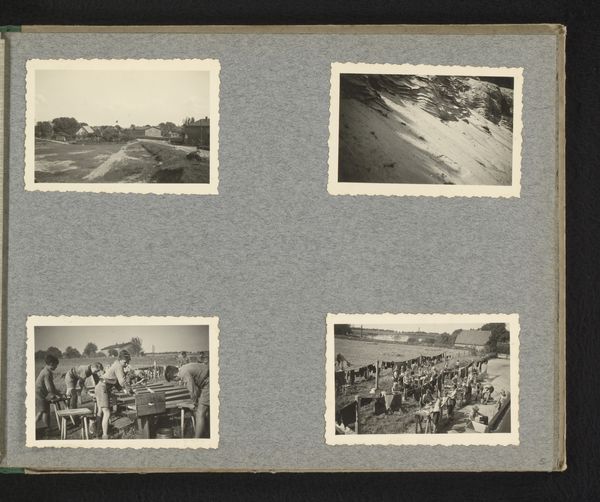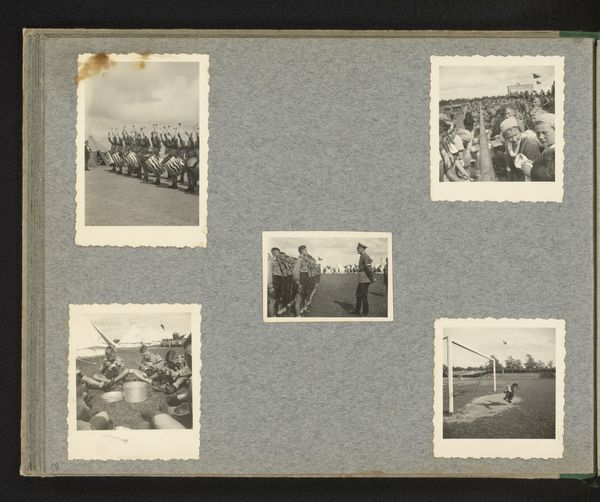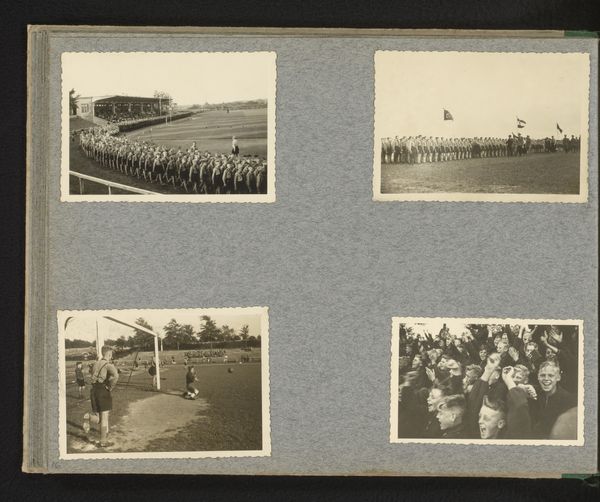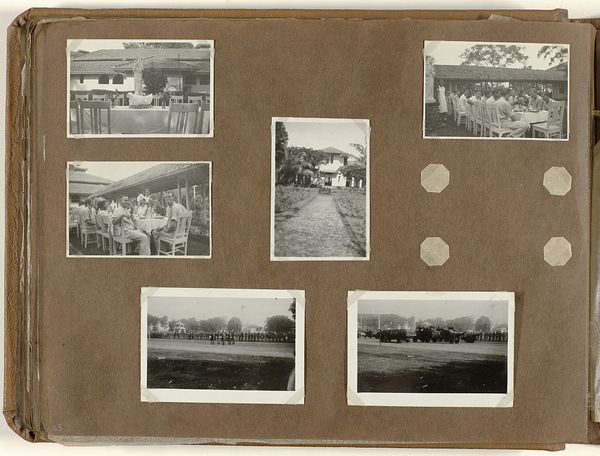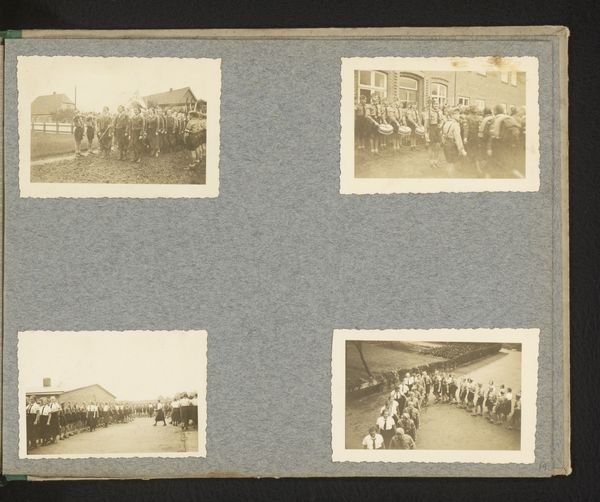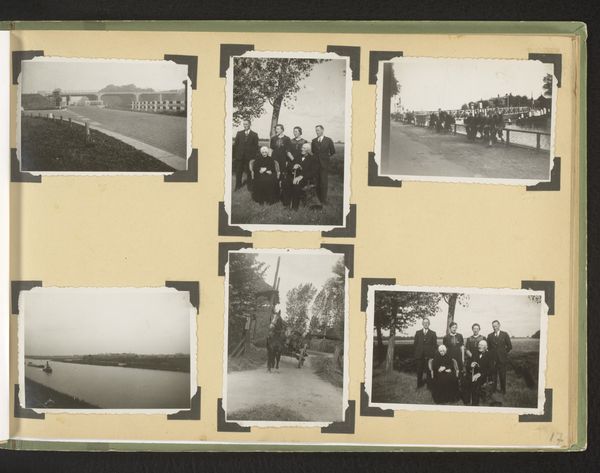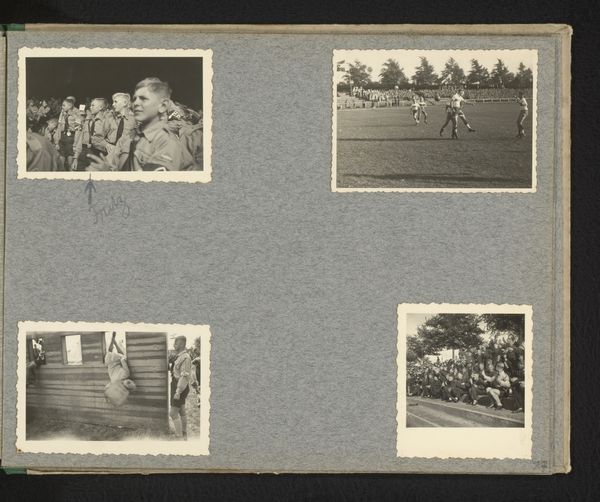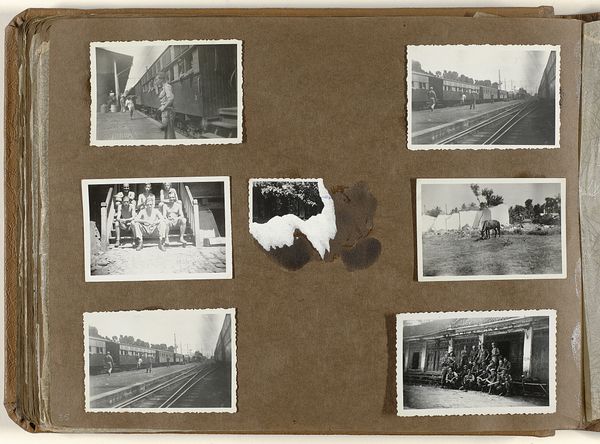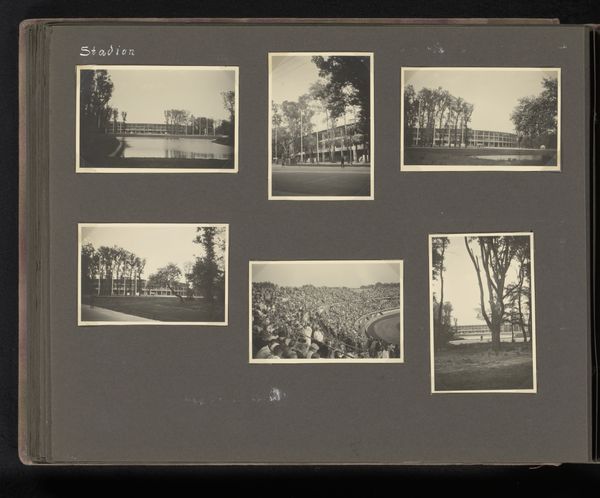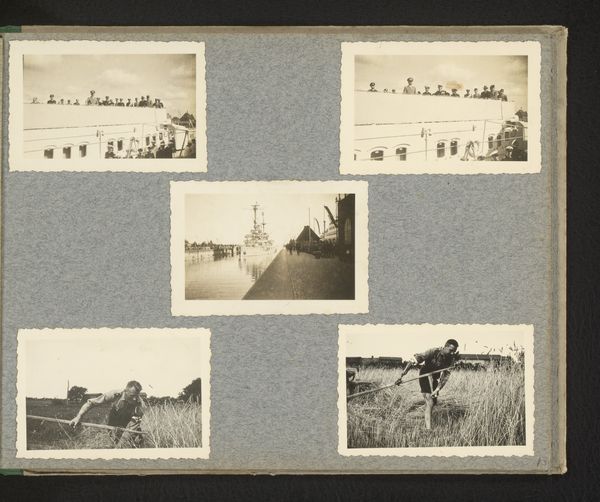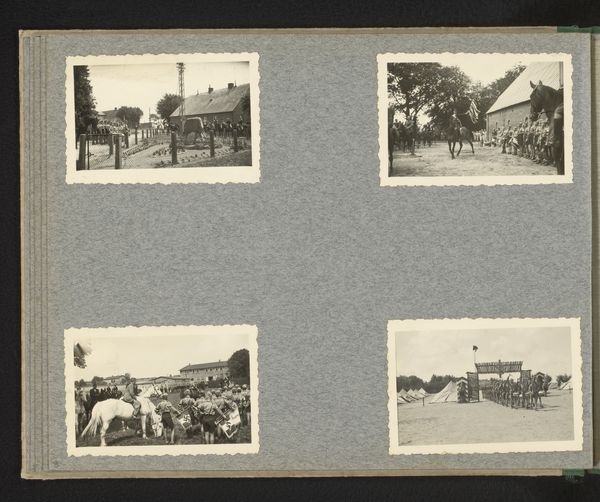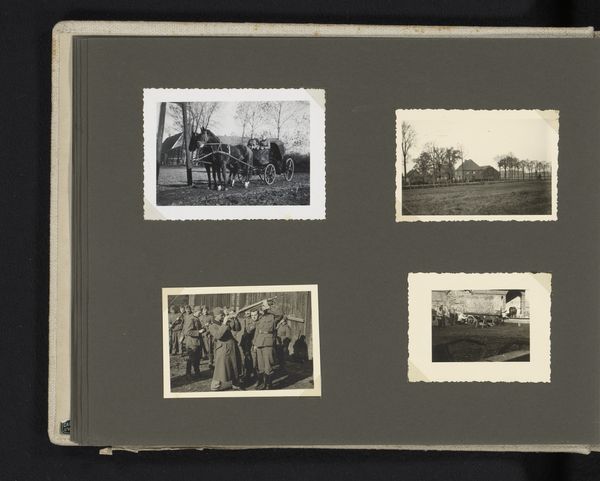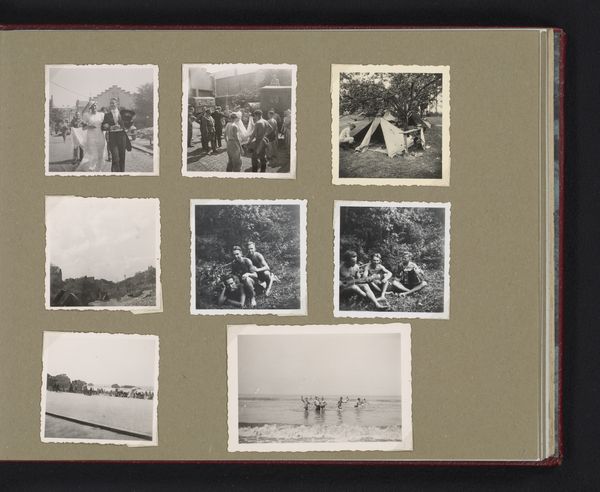
print, photography, gelatin-silver-print
# print
#
landscape
#
social-realism
#
photography
#
gelatin-silver-print
#
realism
Dimensions: height 85 mm, width 112 mm, height 207 mm, width 260 mm
Copyright: Rijks Museum: Open Domain
Curator: This page comes from a photographic album. We believe this image, "Tentenkamp", which translates to "Tent Camp", was captured anonymously sometime between 1935 and 1938, using the gelatin silver print method. What are your initial impressions? Editor: An overwhelming feeling of forced order comes to mind. The crisp rows of tents and matching uniforms create a rather unsettling sense of regimentation and control. There's almost no space for individuality here, everything appears pre-ordained and sterile. Curator: The album and its images are, indeed, linked to National Socialist organizations like the Hitler Youth, capturing activities within the Reich. In some sense, what you note is the ideal. Think of the socio-political climate of the time, where images served specific purposes. Editor: Exactly. Understanding that this was shot in the 1930s explains a lot. It’s the deliberate crafting of an image, isn't it? Promoting a particular ideology through visual representation. I see it through the lens of social control and the suppression of dissent. Curator: Precisely, the medium, the photograph itself, becomes a tool of the state. It reinforces existing power structures by showing a cohesive and orderly populace, willing and even eager to adhere to collective goals, it shapes a narrative of unity and strength. Editor: And consider the perspective. Many of these shots position the viewer to literally look up at these symbols of power, enhancing the sense of authority and scale. It also normalizes conformity and obedience, especially for young, impressionable viewers. It makes me think about propaganda and the grooming of youth for a specific purpose. Curator: I completely agree. From my perspective, the formal photographic style reinforces those very political themes. The sharp lines, geometric organization, almost militaristic repetition... The artistry itself echoes the ideals being presented. The goal being assimilation in preparation for later involvement in other sectors. Editor: Seeing these photos now, with the benefit of hindsight, allows us to critically analyze the way images can be weaponized, even something seemingly innocent, like children in a summer camp. Curator: Indeed. A picture doesn’t simply represent reality; it constructs it. Editor: I leave here with a strong impression of art, and its role in activism. The awareness of a complex social fabric—art can represent an appeal to engage—it becomes our job to ensure this artwork invites discussion, promotes an understanding of oppression, and inspires change.
Comments
No comments
Be the first to comment and join the conversation on the ultimate creative platform.
